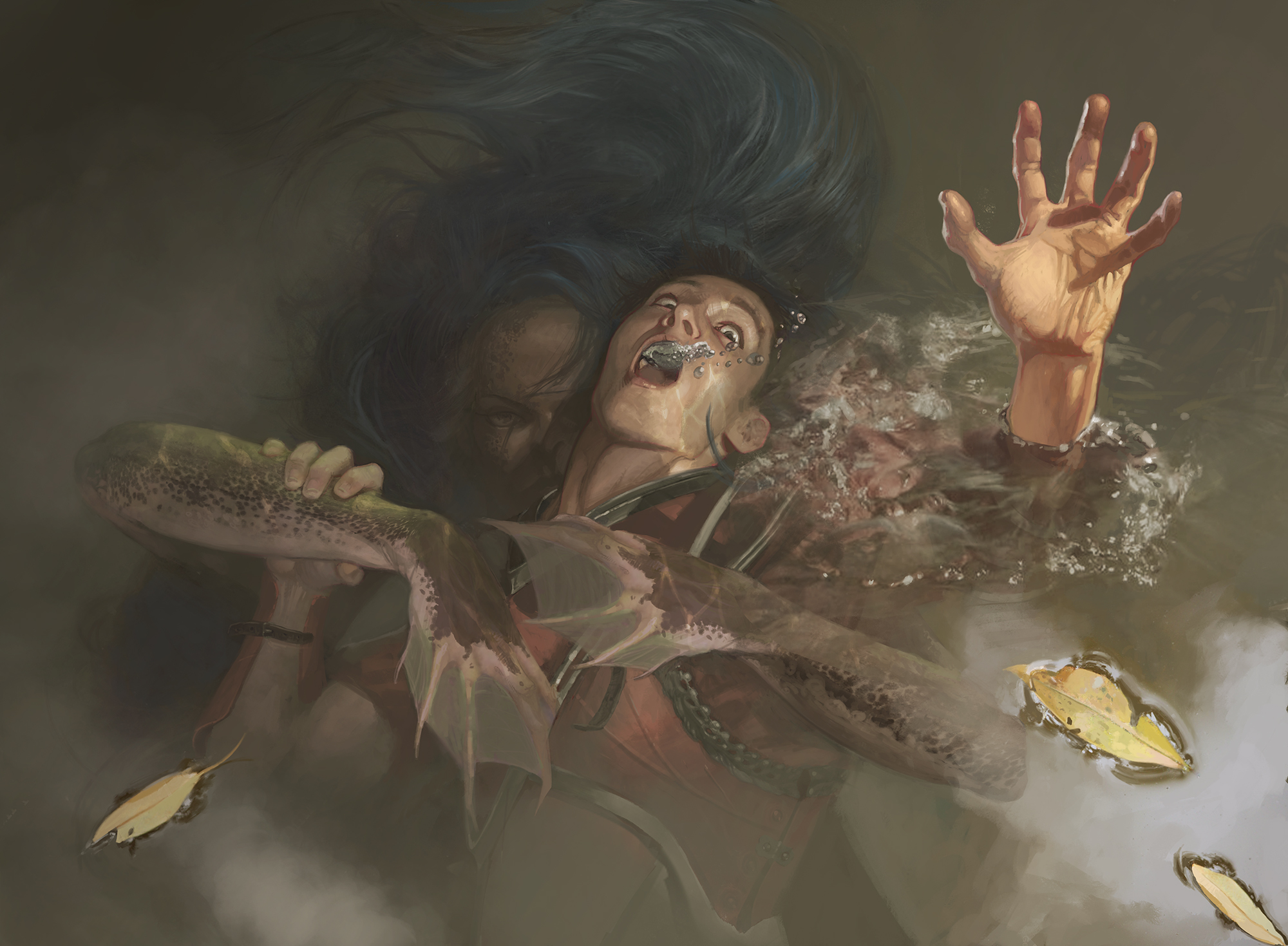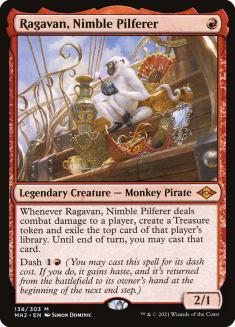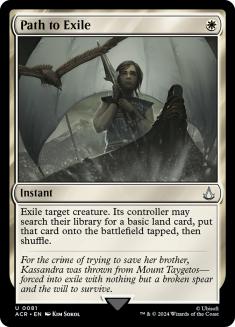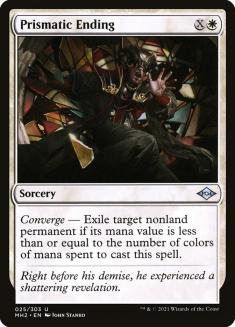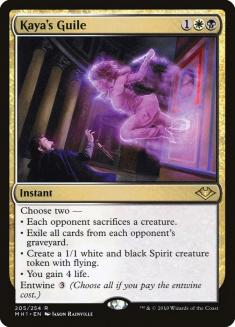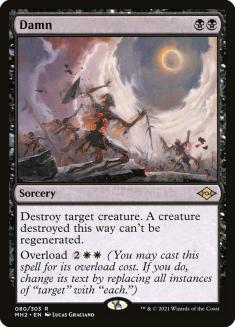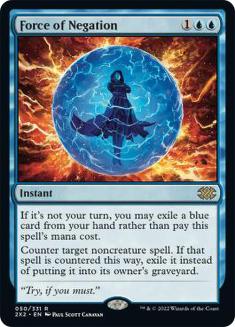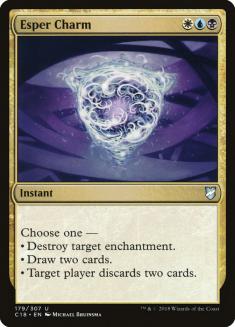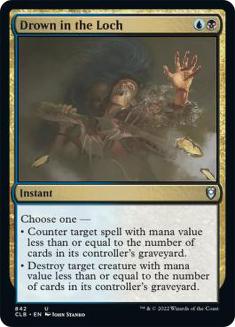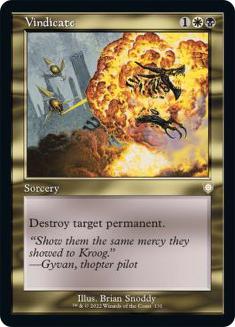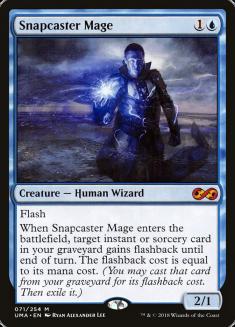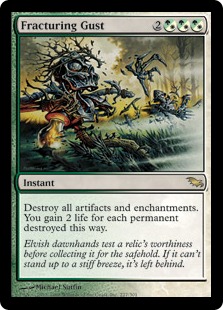Modern is a wild place these days. Even with the influx of powerful spells from Modern Horizons 2, the health of the format is still intact. It was a slightly more robust place for innovation prior to this new set, but it is currently a great competitive format that millions of players are enjoying. Just in my local scene, all the Standard Friday Night Magic events have switched to Modern. This is due in part to Standard being awful, but also a testament to the strength of the Modern format.
The sky was initially falling with the release of Ragavan, Nimble Pilferer, and now things have seemed to settle. It is still one of the most powerful elements in the format; however, many opposing decks seem to have successfully adapted to it. The number of different archetypes that are successful in each passing Magic Online Challenge is astonishing. This success is not limited to aggro, as control, midrange, big mana, and combo have all claimed a piece of the top-tier pie. I have historically been critical of the illusion of choice in Modern, with the options all being various flavors of aggro. This Modern metagame is healthy and I am as shocked as the rest of you.
Control has claimed a few spots at the top after it adapted its removal suite. The days of Path to Exile being our team’s lead removal spell have been suspended. Ragavan is too powerful of a one drop, demanding an immediate answer, and ramping the opponent that quickly is a losing strategy. Dark Confidant was a prime target for my Path to Exile and it felt terrible every time. That is a two-drop example, often leading to loss, but is nothing compared to what can happen to you in the current metagame if that play is repeated on Turn 1. The decks that utilize Ragavan are much more powerful than historical Jund and punish you exponentially harder when handed extra mana in the early-game.
The removal adaptation has been a shift to Lightning Bolt, and it has impressed many of us so far. Of the many articles I have written on Jeskai Control in Modern, the one constant theme continues to hold true. The deck is only viable when Lightning Bolt kills the major threats of the format, and here we are. When the one-mana red removal spell takes out a Ragavan, or any early threat, Jeskai Control has a good chance of being successful in competitive play. Therefore, we have seen Jeskai or Four-Color Control perform well on Magic Online, as well as in local events that have started to pick back up. Lightning Helix has been a draw to the archetype when red-based aggro gets popular, but the true power of Jeskai Control rests in the hands of Lightning Bolt.
Other removal spells have spurred victory in control strategies lately. Prismatic Ending and Supreme Verdict have been instrumental in deterring fast creatures from overwhelming our slow blue decks for the past month. Supreme Verdict is an established superstar, shining over the competition with its ability to get pitched to the powerful, free spells of the format. Even when Force of Negation, Subtlety, and Solitude are not being played, it has an uncounterable clause that gives it the necessary upside to get played over Wrath of God. The newcomer is Prismatic Ending and I have been thoroughly impressed with its performance in three-color control decks.
Prismatic Ending gives a cheap, two-mana universal answer to permanents the opponent drops on Turn 1. You can stop anything from Chalice of the Void through Ragavan, making it versatile enough to become a control staple for the foreseeable future. This has been an area of weakness for Modern control decks in the past, forcing us to pay a premium three mana with Detention Sphere, also requiring a second color to utilize.
This rundown makes it seem like I am on the Jeskai Control team; however, there is a transparent twist coming, derived from my love for black-based removal.
In this removal renaissance, Lightning Bolt is not the only beneficiary in the one-mana department. Fatal Push became the superior option that maintains its relevancy from early- to late-game. With the assistance of fetchlands, it can dispatch the larger threats of Modern that Lightning Bolt cannot. This is especially important as midrange decks continue to see success in this diverse format and control players are trying to maximize their bang-for-buck deckbuilding choices. Lightning Bolt has been fun to play in the current format, but it has nothing on Fatal Push.
Although Fatal Push is the superior removal spell in control, the rest of the deck must come together around it. Esper Control is the obvious shell that encapsulates black-based removal the best and its viability depends on a few other elements. I have always been a champion for Kaya’s Guile, but many have not been. It has been the second most important pull to play Esper Control in Modern, and luckily for us, it is still very good.
Having a Game 1 outlet for lifegain and graveyard hate is huge. For Gabriel Nassif to achieve victory with his Jeskai Control deck, he employed two copies of Rest in Peace in his maindeck. That effect comes with the purchase of Esper Control, making the Kaya’s Guile stock go way up. Playing this spell gives you access to sideboard options in the first game, while also having the potential to produce a flyer and kill a tough creature. When facing down a resolved Kaldra Compleat and its Germ buddy, which all-in-one spell would you love to have in hand?
The last removal draw to Esper Control over the competition is Damn. I have been a huge advocate for this spell since it was previewed but have always acknowledged where it falls short. Not being blue or white hurts when there are this many free spells that require those colors. As the metagame continues to evolve, we are seeing control decks playing fewer and fewer Force of Negation and Evoke Elementals, providing a prime spot for Damn to break out.
It is the superior removal spell by effect, playing as a two-mana answer to a must-kill creature, or rewarding players in the mid-game with a powerful sweeper. It comes with an anti-regeneration effect and gets around Gaddock Teeg, a creature that still haunts my dreams to this day. Those are the minor advantages of Damn, where the modal option of a two-mana removal spell is the big payoff. With these superior black removal spells, this is what I am currently playing in Modern.
Creatures (4)
Planeswalkers (4)
Lands (25)
Spells (27)

Esper Control has been a ton of fun to play and is as powerful as it’s ever been. This list continues to evolve as the metagame shifts, with many powerful elements not making the final cut you see here. Notable absences are Teferi, Time Raveler and Force of Negation, spells that I would have never left at home a few months ago. Those absences, and a few questionable card-counts, all have a valid explanation that is rooted in adaptation. I had to make changes to address the diverse yet hostile Modern metagame we are all enjoying right now.
Teferi, Time Raveler will likely make it into future iterations, but has the hardest time breaking through in most Esper Control decks. This shard has too many three-drop plays, making it difficult to justify one of the greatest planeswalkers of all time getting a slot.
Teferi, Time Raveler shines in slower formats, and is efficient in decks that do not have a lot of action on Turn 3. The space criteria are not met here, with Esper Charm, Snapcaster Mage, Archmage’s Charm, and Kaya’s Guile all fighting for the same time slot. There is no controversy on the speed of Modern, making the other criteria invalid as well.
Even though I know it should not be incorporated into this build of Esper Control, my love for the card will defy my inner logic eventually. For now, this is where I stand on the inclusion of Teferi, Time Raveler.
Force of Negation is another card that is not making headlines in Modern control decks these days. The fear of card disadvantage is real for blue aficionados, as they have mostly shed true card draw from their control decks. Expressive Iteration is one of the few dedicated card draw spells being played today and we see more sightings of free spells that require a card sacrifice when used for zero mana.
In Esper Control, there are planeswalkers, a copy or two of Esper Charm, and Archmage’s Charm, but counting on the card advantage from those is idealistic thinking. If you are producing a ton of cards from that list, then the game is likely won anyway. Just like with Teferi, Time Raveler, Force of Negation is not an easy cut from the list and may resurface in the coming weeks. For now, both cards are absent from my metagame build of Esper Control.
The biggest changes made to my previous iterations of Esper Control are the quantities of each spell. Esper Charm, Drown in the Loch, and Prismatic Ending are all one-ofs for important reasons. The speed of the format has diminished the effectiveness of Esper Charm, a card that is at full strength when there is time to Mind Rot, Divination, or answer a deadly enchantment. It still plays an important role, providing some diversity in the disruption column while having an outlet to produce card advantage. As for Drown in the Loch and Prismatic Ending, there are competitors that make them less effective in comparison.
Counterspell has squashed the necessity for mediocre two-mana countermagic. Drown in the Loch and Dovin’s Veto are the sole survivors here, one having a removal mode and the other being uncounterable. In Esper Control, having a fifth counterspell that can easily kill a Ragavan on Turn 2 is very useful. It continues to overperform, solidifying its one-of slot moving forward.
Prismatic Ending is great in the deck but has been temporarily reduced in number in favor of Vindicate. Vindicate effectively does the same thing but always at three mana and without exiling. It has been a better-performing option, giving me the power to disrupt decks that Prismatic Ending could not.
Big-mana decks, like Mono-Green Tron, laugh in the face of our removal spells. They are often dead cards, rotting in our hand until our inevitable loss. Since Esper Control does not have Field of Ruin, it is at the mercy of the terrifying late-game of Mono-Green Tron unless its planeswalkers can solidify victory behind a thin wall of countermagic before then. Vindicate changes this dynamic completely, demolishing Tron lands as early as Turn 3.
Having two copies is great against them, but it gets better.
Snapcaster Mage has produced some land destruction series that would not have been possible in years past. Field of Ruin is great, putting them back in Tron assembly in return for a basic Forest, but actual Stone Rain is much better. Having the flexibility to do this to Mono-Green Tron, while also being able to take out most threats in the rest of the metagame, is the reason why it has more spots than Prismatic Ending in Esper Control.
The sideboard looks like those of the past for Esper Control. Fracturing Gust is the only oddball here, a requirement for control to defeat Mono-White Hammer (Lurrus). This silly deck is a pain in the side for all control players, an artifact-based deck relatively unaffected by Stony Silence. That is why we struggle here; in the past, we would cast a two-mana enchantment, and decks in this vein could not win. Fracturing Gust is a necessity now, and I am fine dedicating a couple of sideboard slots to it.
The rest of the sideboard fills in areas of weakness against aggro, big mana, and control, with the reintroduction of Monastery Mentor to help seal games away earlier. It is too dangerous to depend on planeswalkers and Snapcaster Mage to kill an opponent, so Esper Control brings in the creatures once the removal exits in the sideboarded games. This trick is old, but still effective in the new Modern metagame.
Regardless of which three-color control deck you choose, the Modern metagame is currently beatable. Control fans, this is your moment.

